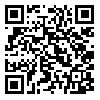Thu, Jan 1, 2026
Volume 10, Issue 3 (Summer 2024)
Caspian J Neurol Sci 2024, 10(3): 225-234 |
Back to browse issues page
Download citation:
BibTeX | RIS | EndNote | Medlars | ProCite | Reference Manager | RefWorks
Send citation to:



BibTeX | RIS | EndNote | Medlars | ProCite | Reference Manager | RefWorks
Send citation to:
Saeedi N, Hatamian H, Erfanian M, Shafiei F, Homam S M. Mental Health and Seizure Patterns in Epileptic Patients During COVID-19 Pandemic: A Case Study in Northeast Iran. Caspian J Neurol Sci 2024; 10 (3) :225-234
URL: http://cjns.gums.ac.ir/article-1-699-en.html
URL: http://cjns.gums.ac.ir/article-1-699-en.html
1- Faculty of Medicine, Student Research Committee, Mashhad Medical Sciences Branch, Islamic Azad University, Mashhad, Iran.
2- Department of Neurology, Faculty of Medicine, Poursina Hospital, Guilan University of Medical Sciences, Rasht, Iran.
3- British Columbia Institute of Technology, Burnaby, Canada.
4- Neuroscience Research Center, Poursina Hospital, Guilan University of Medical Sciences, Rasht, Iran.
5- Department of Neurology, Faculty of Medicine, Mashhad Medical Sciences Branch, Islamic Azad University, Mashhad, Iran. ,mehrhomam@mshdiau.ac.ir
2- Department of Neurology, Faculty of Medicine, Poursina Hospital, Guilan University of Medical Sciences, Rasht, Iran.
3- British Columbia Institute of Technology, Burnaby, Canada.
4- Neuroscience Research Center, Poursina Hospital, Guilan University of Medical Sciences, Rasht, Iran.
5- Department of Neurology, Faculty of Medicine, Mashhad Medical Sciences Branch, Islamic Azad University, Mashhad, Iran. ,
Abstract: (1209 Views)
Background: The rapid distribution of the novel coronavirus disease 2019 (COVID-19) led to an increased prevalence of mental problems. Also, patients with epilepsy (PWE) are more prone to mental illnesses, and approximately 25% of them have psychopathological comorbidities. On the other hand, cancellation of the patient’s appointment, decreased medical care services and strict isolation affect both the mental health and epilepsy care of the patients.
Objectives: This study aimed to compare depression, psychopathological distress, and sleep disturbances between PWE and a normal group during COVID-19 pandemic.
Materials & Methods: A total of 76 PWE, who were consecutively referred to the Neurology Clinics of 22 Bahman Hospital, Khorasan Razavi, Iran, were recruited. Also, 76 age- and gender-matched healthy persons were included as the normal group. Demographic and epilepsy-related information was collected from the 6-item Kessler questionnaire, Beck depression inventory, and Pittsburgh sleep quality index questionnaire. The obtained data were used to assess psychopathological distress, depression, and sleep quality, respectively.
Results: PWE had significantly higher levels of psychopathological distress (P=0.04), depression (P=0.02), and sleep disorders (P=0.01) than healthy individuals. Results showed that duration of disease was significantly associated with depression level and sleep disorders (P<0.05). According to multivariate logistic regression results, disease duration had significant associations with Beck depression inventory scores (OR:1.128; 95% CI, 1.110%, 1.729%) and Pittsburgh sleep quality index scores (OR: 1.860; 95% CI, 1.363%, 1.922%).
Conclusion: The significant disparities in psychopathological distress, depression and sleep disorders between PWE and healthy individuals highlight the vulnerability of PWE to mental health challenges during crises.
Objectives: This study aimed to compare depression, psychopathological distress, and sleep disturbances between PWE and a normal group during COVID-19 pandemic.
Materials & Methods: A total of 76 PWE, who were consecutively referred to the Neurology Clinics of 22 Bahman Hospital, Khorasan Razavi, Iran, were recruited. Also, 76 age- and gender-matched healthy persons were included as the normal group. Demographic and epilepsy-related information was collected from the 6-item Kessler questionnaire, Beck depression inventory, and Pittsburgh sleep quality index questionnaire. The obtained data were used to assess psychopathological distress, depression, and sleep quality, respectively.
Results: PWE had significantly higher levels of psychopathological distress (P=0.04), depression (P=0.02), and sleep disorders (P=0.01) than healthy individuals. Results showed that duration of disease was significantly associated with depression level and sleep disorders (P<0.05). According to multivariate logistic regression results, disease duration had significant associations with Beck depression inventory scores (OR:1.128; 95% CI, 1.110%, 1.729%) and Pittsburgh sleep quality index scores (OR: 1.860; 95% CI, 1.363%, 1.922%).
Conclusion: The significant disparities in psychopathological distress, depression and sleep disorders between PWE and healthy individuals highlight the vulnerability of PWE to mental health challenges during crises.
Type of Study: Research |
Subject:
General
Received: 2024/02/26 | Accepted: 2024/05/12 | Published: 2024/07/7
Received: 2024/02/26 | Accepted: 2024/05/12 | Published: 2024/07/7
Send email to the article author
| Rights and permissions | |
 | This work is licensed under a Creative Commons Attribution-NonCommercial 4.0 International License. |






